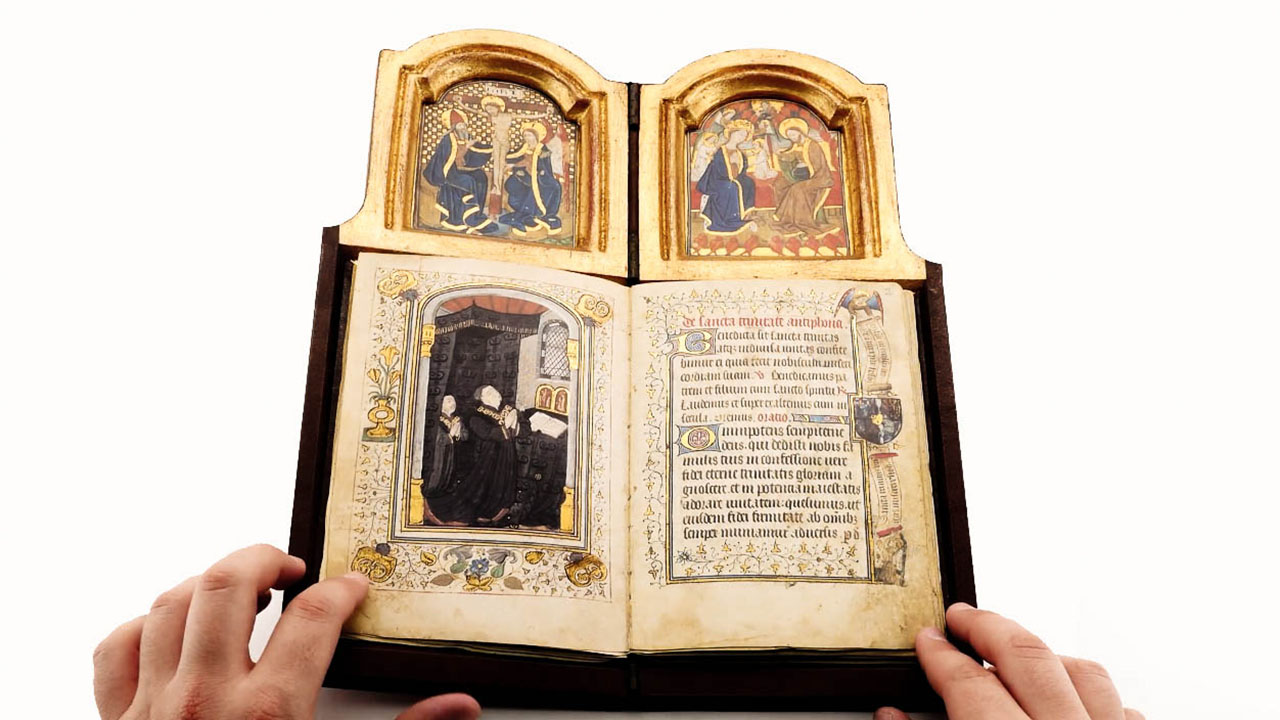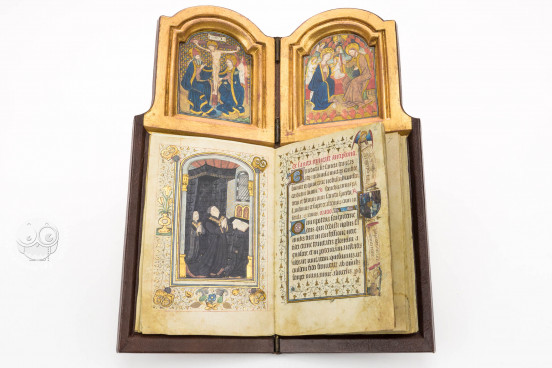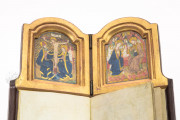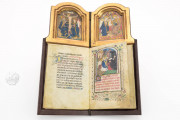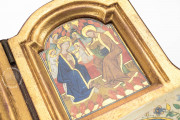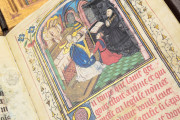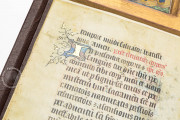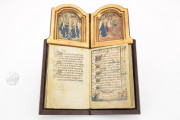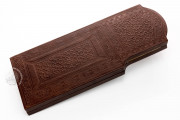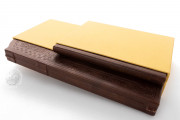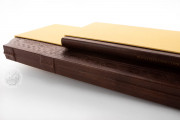The Book Altar of Philip the Good is a painted diptych on panel and a Christian prayer book united to create a portable altar. The manuscript, made around 1430-1450 in Flanders, contains a selection of prayers in Latin and French, likely chosen by the book's patron, Philip, Duke of Burgundy. A full-page miniature that opens the book shows Philip with his son, Charles, at the time of Count of Charolais. His coat of arms is in the outer border of the facing page. Two more miniatures, smaller in format, include the duke in prayer.
Philip "the Good" (1396-1467), Duke of Burgundy, is celebrated for his prolific patronage of the arts. In addition to amassing a vast personal library, he commissioned more than sixty books in his lifetime. The book altar is a unique object that reflects its patron's devotional sensibility.
A Book Altar
The connection between a painted diptych and a book is natural. Diptychs could open and close in the same manner as books, and there are several examples of smaller fifteenth-century diptychs that were made to look like books. The edges of some diptychs were painted to resemble pages of books, and sometimes diptychs were stored in pouches in imitation of prayer book storage. And, like prayer books, smaller diptychs could be opened and rested atop a cushion, mimicking the typical viewing of personal devotional books.
The Diptych
The small diptych of the Book Altar of Philip the Good depicts the Trinity and the Coronation of the Virgin, mirroring the emphasis of the prayers in the book. The Trinity is on a pattered background, its luminous gold echoed in the halos and the trim and clasps of garments. A swath of gold behind the Virgin and Christ in the Coronation complements the gold-trimmed robes in the painting. Dating from the 1430s, the paintings are earlier than those on the pages of the manuscript. The frame around them is gilt in the front, while the beautiful wooden boards are covered with leather and stamped with ornate designs.
The Duke in Prayer
The portraits of the duke allude to the viewing experience of this unique object. He appears in all three miniatures, sitting or standing in prayer and is easily identifiable by his collar of the Order of the Golden Fleece (which he established in 1430). With his hands clasped in prayer over an open manuscript, Philip meditates on a scene before him, the Mass of Saint Gregory (fol. 4r) or an apparition of the Virgin (fol. 13v). The closest approximation to the book altar experience is captured in the opening miniature. With his son behind him, Philip meditates on a book open before him and a diptych set up just on top of it (fol. 1v).
Pilgrim Badges
Philip personalized the manuscript even further with the addition of pilgrim badges, of which the duke was a passionate collector. These badges were souvenirs of a devotional journey and, as such, were ideal additions to a private prayer book. These appear in many of Duke Philip's prayer books, and twenty-two offsets of such badges are found in the book altar (visible on fol. 32 and the first flyleaf).
We have 2 facsimiles of the manuscript "Book Altar of Philip the Good":
- Buchaltärchen Herzog Philipps des Guten von Burgund facsimile edition published by Faksimile Verlag, 1991
- Libro Altar de Felipe III, Duque de Borgoña facsimile edition published by Club Bibliófilo Versol, 2016

